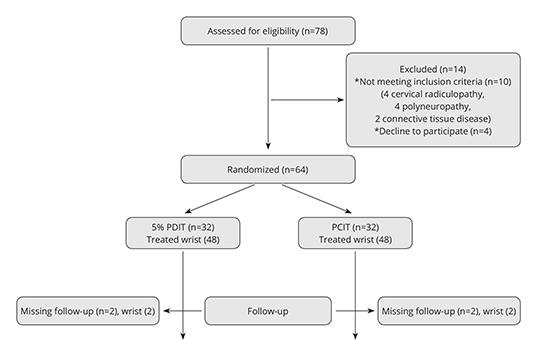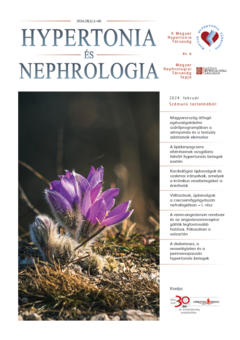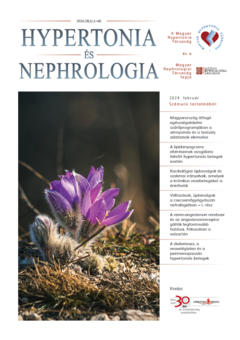The eLitMed.hu medical portal uses computer cookies for convenient operation. Detailed information can be found in the Cookie-policy.
Specialities
Nephrology
Perineural 5% dextrose versus corticosteroid injection in non-surgical carpal tunnel syndrom treatment
We aimed to investigate the difference of clinical and electrophysiological improvement between perineural corticosteroid injection therapy and perineural 5% dextrose injection therapy in carpal tunnel syndrome. Total of 92 wrists that were diagnosed as mild-to-moderate idiopathic CTS and completed their follow-up were included in our study. The severity of pain, symptom severity and functional status were assessed by visual analog scale.
[Patients with diabetes, renal failure and perimenopausal hypertension]
[The determinants of cardiovascular (CV) morbidity and mortality is sympathetic overweight, which is the main risk factor for CVD. factors - hypertension (HT), diabetes mellitus (T2DM), renal function deterioration (CKD), dyslipidaemia and, in women, the perimenopausal status - significantly potentiates the adverse effects of diabetes, dyslipidemia, diabetes mellitus.]
[Changes/new developments in pediatric nephrology I. – Vesicoureteral reflux (VUR)]
[In the case of vesicoureteral reflux (VUR), the abnormal backflow of urine from the bladder to the kidneys increases the risk of pyelonephritis and, in severe cases, causes kidney damage.]
1.
Clinical Neuroscience
[Headache registry in Szeged: Experiences regarding to migraine patients]2.
Clinical Neuroscience
[The new target population of stroke awareness campaign: Kindergarten students ]3.
Clinical Neuroscience
Is there any difference in mortality rates of atrial fibrillation detected before or after ischemic stroke?4.
Clinical Neuroscience
Factors influencing the level of stigma in Parkinson’s disease in western Turkey5.
Clinical Neuroscience
[The effects of demographic and clinical factors on the severity of poststroke aphasia]1.
2.
Clinical Oncology
[Pancreatic cancer: ESMO Clinical Practice Guideline for diagnosis, treatment and follow-up]3.
Clinical Oncology
[Pharmacovigilance landscape – Lessons from the past and opportunities for future]4.
5.





